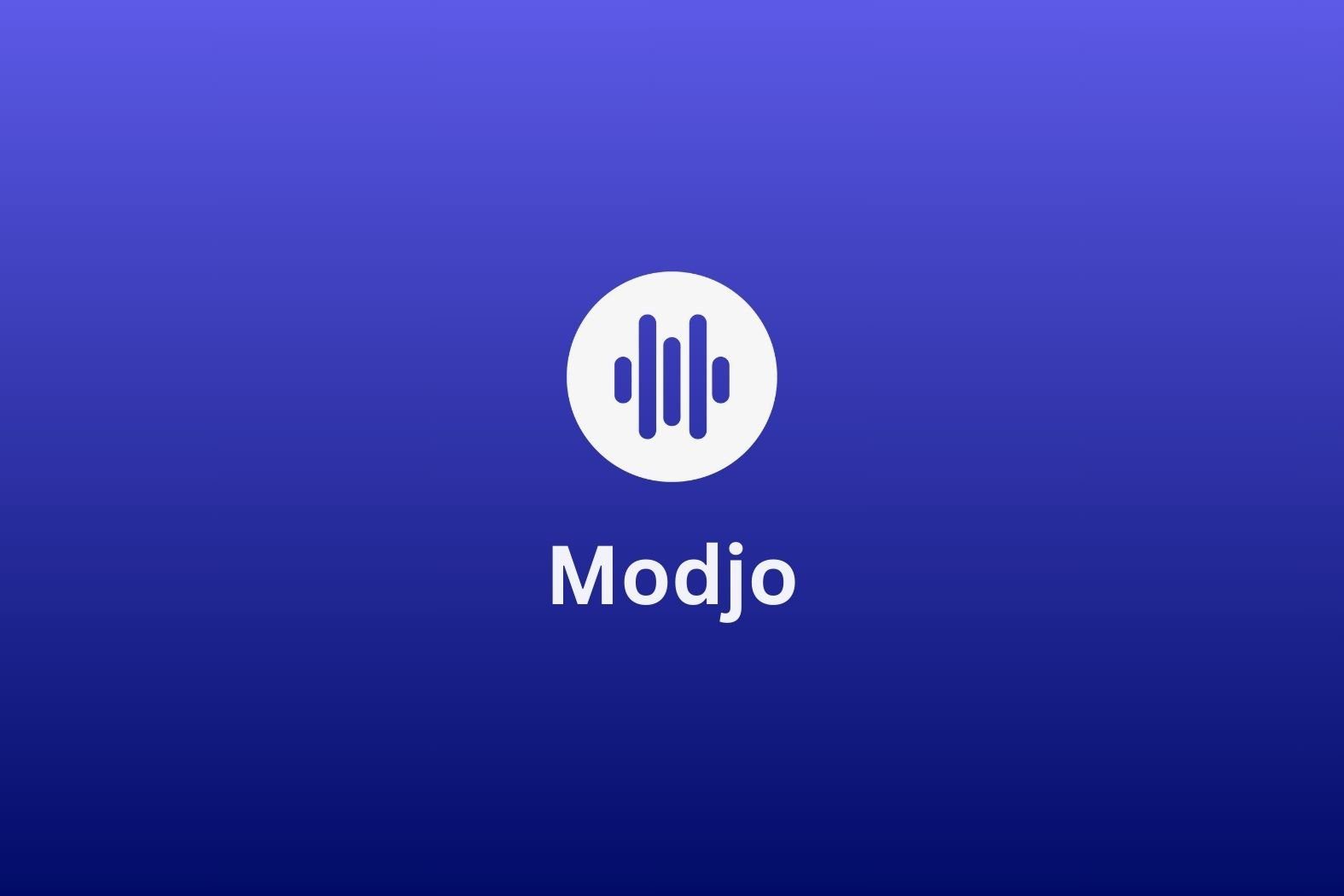Modjo is a sales tool that records and transcribes your sales calls, providing deal intelligence to boost revenue. While most of its features are geared towards sales teams, you can also use this powerful platform to organize your regular meetings. After all, there was a total of 3.3 trillion minutes of calls in 2023 on Zoom alone.
With Modjo, you can put the insights gained from online meetings to work. It’s designed to help you leverage AI for sales productivity and deal execution, unleashing your sales team’s true potential.
However, there are dozens of Modjo alternatives on the market that tick all the same boxes. Some do even more, some have different specialities but lots of cross over, while others hit the same target market but cost less. Whatever you’re looking for, we’re sure you’ll find a Modjo alternative that catches your eye.
But first, let’s do a Modjo review. What is Modjo exactly?
Modjo Review: What is Modjo?
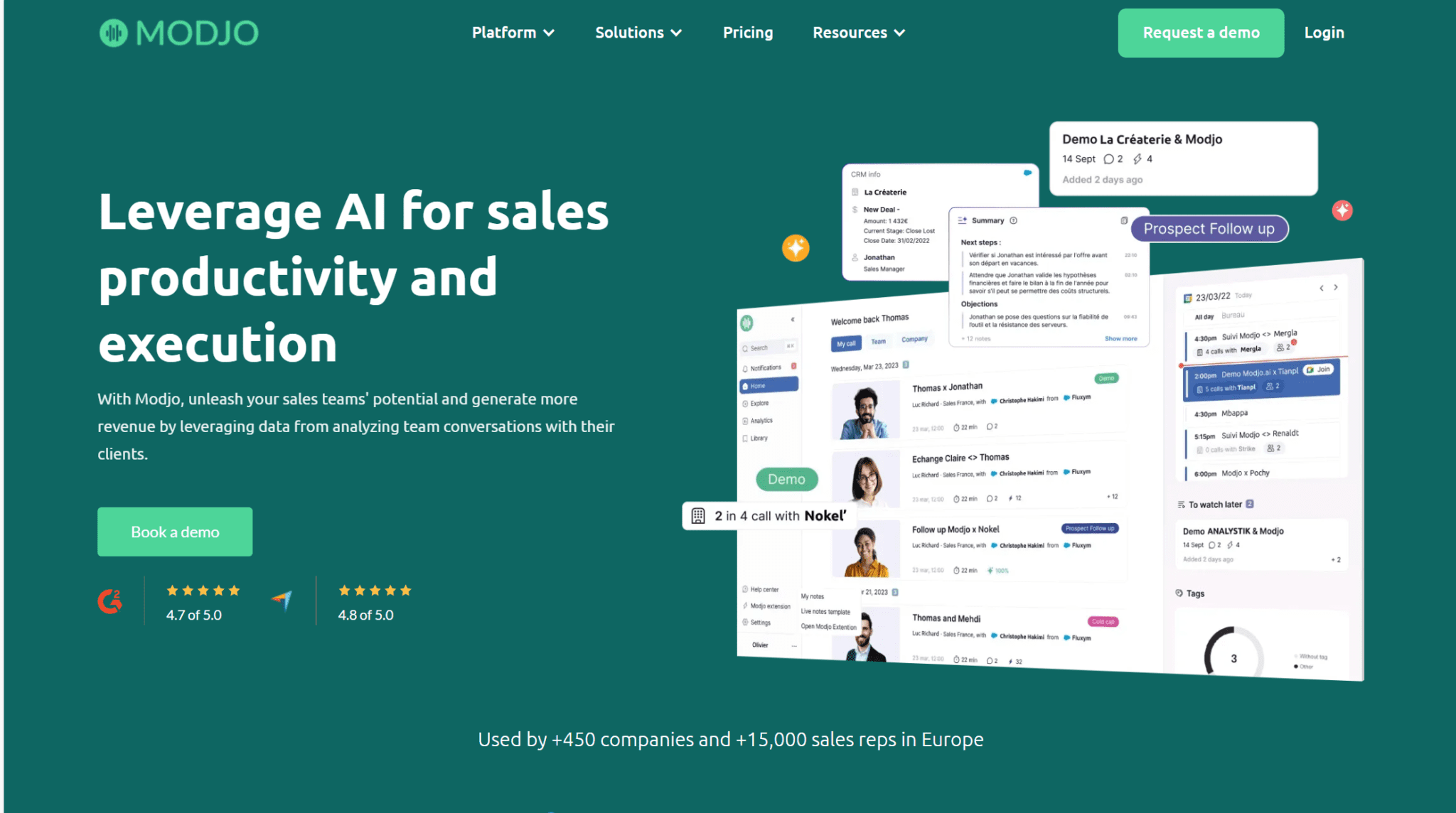
Modjo is one of the best revenue intelligence platforms on the market in 2024. It converts conversational intelligence into conversions, upping your sales game and helping your team close more deals.
It aims to improve your business’s revenue by analyzing sales calls and utilizing the insights gathered in new and improved sales strategies. You can maximize your team’s productivity and streamline the path to success by using all the data it automatically draws from your interactions. Put simply, it mass-processes all the data from your sales calls to optimize your sales strategy, saving sales managers and reps time and energy.
Modjo boasts about saving upwards of 4 hours of a sales rep’s time each and every week. That’s no small feat. Over the course of a year, you’re looking at more than 200 additional hours (more than 5 work weeks!) that can be used elsewhere. Modjo also claims that clients who used their tool increased their conversion rate by over 20%.
Modjo Pros
- Note taking is simple. Modjo’s AI takes care of meeting notes so you can focus on the conversation. It automatically syncs them with your CRMs, but also syncs notes across all business tools into one centralized and easily accessible place.
- Enhances productivity. By automating routine tasks, Modjo saves your sales reps hours each week.
- Modjo call summaries. Modjo’s summaries are clear overviews of everything that happened in the meeting.
- Modjo Deals. This feature allows revenue managers to forecast with confidence and prioritize their pipeline accordingly.
Modjo Cons
- Privacy. Some users have criticized Modjo for not gaining the meeting participants’ permission before recording.
- Learning curve. Can be a bit overwhelming at first.
- No regional dialect support. Transcripts aren’t great for regional dialects.
- No free plan or trial. There’s no way to try out Modjo without committing to $100+ per month.
- Limited integrations. Modjo offers less than 40 integrations. There’s a decent amount there, but not nearly enough to be competitive in 2024.
Modjo Pricing
Modjo’s pricing is not so easy to find. You can trawl through the website but you’ll end up being directed to a sales call where you’ll be pitched a customized plan depending on your business needs.
There is no free plan and no free trial. It’s expected, however, that Modjo’s subscription starts at around $1,000 per user per year.
This can be quite steep for some smaller businesses, especially without any ways to try before you buy. For those that find it a bit on the pricey side, there are tons of Modjo alternatives that are worth checking out. We’ll take a look at the top 4 here.
Top 4 Modjo Alternatives
1. tl;dv
tl;dv, which is short for “too long; didn’t view”, is slightly different from Modjo. Where Modjo focuses on deal intelligence and boosting revenue, tl;dv is more targeted towards sales managers who want better organization over their sales rep’s coaching and individual progress.
You might say that Modjo is better for revenue managers and tl;dv is better for sales managers, but there is certainly some crossover so let’s take a bit of a deeper dive.
The first big distinction is that tl;dv has a free plan. Not just any old free plan either, but a feature-packed one that gets you unlimited recordings, transcriptions, and AI moment summaries, as well as limited advanced AI features. You can also integrate tl;dv with your email, Slack, and calendar on the free plan.
When you commit to the paid subscriptions for tl;dv, you unlock 5,000+ integrations, unlimited AI usage, and cutting edge sales coaching features like playbooks, scorecards, and objection handling tips.
Additionally, tl;dv provides multi-meeting intelligence so that managers can receive recurring reports on any topic they want within predefined parameters. For sales managers, this means you can get regular reports that provide an overview of how all your sales reps handled a specific objection, for example. These reports will come with timestamps for you to jump to specific moments from multiple different meetings that occurred within the timeframe of the report. This feature single-handedly places it as one of the best Modjo alternatives.
While objection handling was the example used, this feature isn’t sales-only. Customer success teams can make use of tl;dv to identify calls about a specific problem; product teams can leverage the tool to monitor progress with a new feature; and user research teams can utilize this feature to quickly find common ground across all your user interviews.

tl;dv’s quest to be the best sales training tool isn’t over with the aforementioned features either. It also provides template playbooks like BANT or MEDDIC for you to use and a dashboard to monitor your sales team’s performance, including specific factors like a sales rep’s talk-to-listen ratio. You can even create your own custom playbooks and use scorecards to assess each individual sales rep.
Let’s not forget that tl;dv can record and transcribe meetings concurrently too. If you’re one of the 83% of employees who spend up to one third of their work week in meetings, then tl;dv lets you attend less and remember more.
tl;dv Pros
- Free AI integration: tl;dv leverages first class AI to provide summaries, notes, and automatic speaker detection.
- Free and instant translations: tl;dv’s transcriptions are available in more than 40 languages for Zoom, MS Teams, and Google Meet.
- Incredible free plan: Unlimited free video recordings and transcriptions of Zoom, MS Teams, and Google Meet calls.
- Easy to use: tl;dv’s sleek design makes it super easy for beginners and experts alike.
- Multi-meeting intelligence. Schedule recurring reports to get insights from multiple meetings at once, delivered straight to your inbox.
- Sales coaching. Upgrade your sales team using insights from your sales calls. Improve objection handling and use templates or custom playbooks to personalize your coaching strategy.
- Timestamps and tagging features: Timestamp your meeting highlights to quickly jump back to specific moments in the call. It also features the ability to tag colleagues at specific meeting moments so they get an email with a link straight to their inbox.
- 5,000+ integrations: Push timestamps and meeting clips directly to Notion, Slack, HubSpot, Salesforce, and 5,000+ more via native integrations.
- Create clips and highlights: Scan your library and make clips and highlight reels to condense insights.
- Intuitive library: Search your meetings library for keywords in transcripts to quickly find what you’re looking for.
- Concurrent meetings. tl;dv’s AI can record and transcribe multiple meetings at the same time, making your life easier if you’re double (or triple+) booked.
tl;dv Cons
- Compatibility: Not yet available for Webex or BlueJeans.
- No revenue intelligence. While tl;dv provides ample sales coaching features, it doesn’t have the deal execution dashboard that makes Modjo popular.
Pricing
tl;dv’s free plan instantly sets it apart from Modjo. You can try out the vast majority of tl;dv’s features right now without any strings attached. Plus, depending on which region of the world you’re in, you can get up to a 40% discount on the paid plans!
Free Plan Features
- Unlimited video recordings and transcripts.
- Record Google Meet, Zoom, and MS Teams calls.
- Transcribe in 40+ languages
- Unlimited AI moment summaries
- 10x AI Meeting Notes
- 10x Ask tl;dv AI
- 10x AI Multi-Meeting Reports
- Slack, Email, and Calendar integrations
- Set timestamps and highlights
- Create and share clips
- Automatic speaker recognition
- 3 monthly uploads
tl;dv’s paid subscriptions unlock 5,000+ integrations, sales coaching playbooks, limitless multi-meeting intelligence, recurring reports, analytics, downloadable recordings, customizable share settings, priority customer support, and much, much more.
See the full details here.
tl;dv vs Modjo
This really depends on your business needs. If revenue intelligence is a nice bonus but not the main thing you’re after, tl;dv might be the better option. It does everything else that Modjo does (and more) for much less.
However, if you’re a revenue manager and revenue intelligence from calls is important to you, Modjo might be the preferred pick. Even still, you could try out tl;dv’s free plan and partner it with a separate revenue intelligence platform. This might get you the best of both worlds.
2. Gong
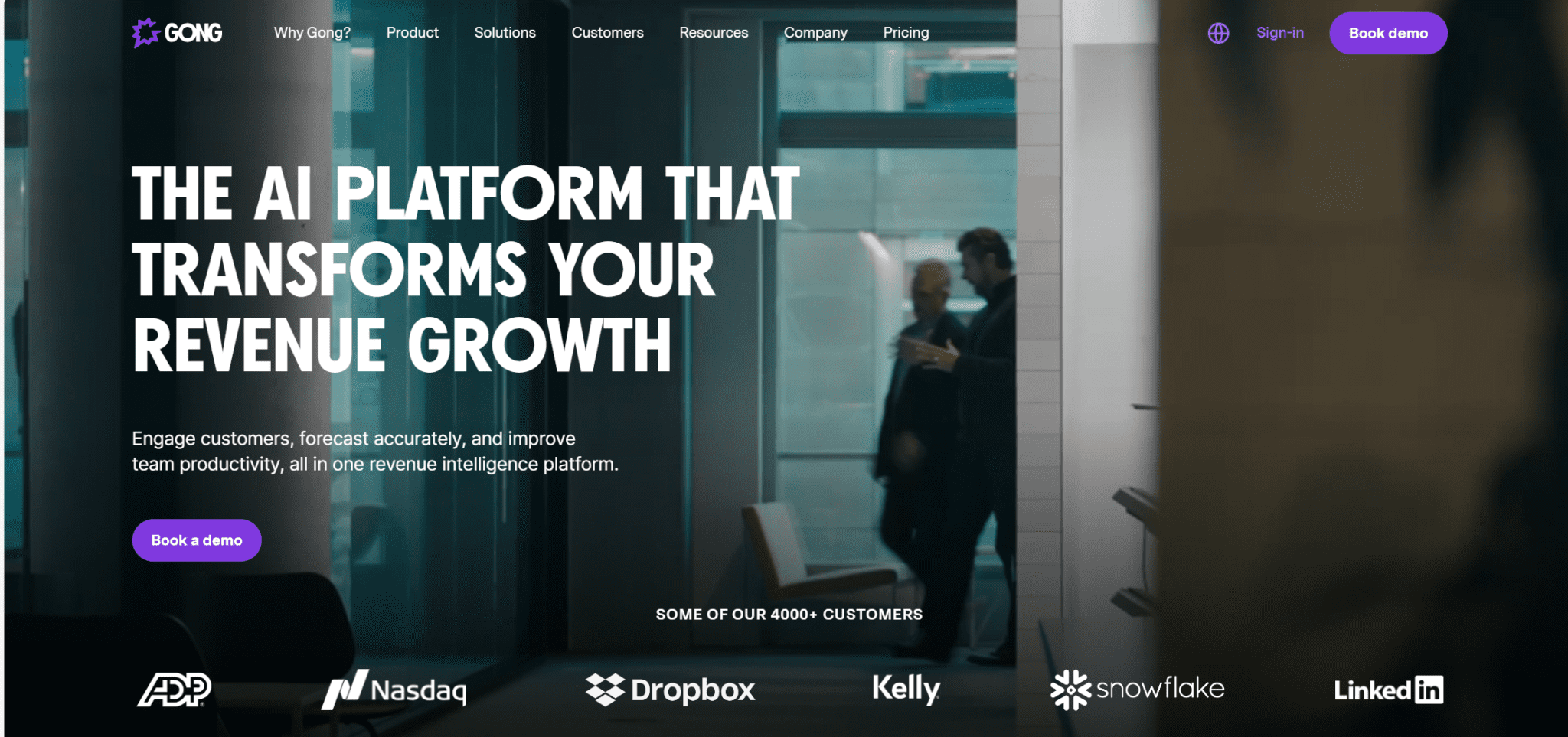
Just in case you’re here specifically for a Modjo alternative that also provides state-of-the-art revenue intelligence, Gong is the platform you’ll want to take a look at. However, a quick word of warning: Gong is even pricier than Modjo!
Put simply, Gong is one of the best sales tools on the market right now. It does everything Modjo does and more. Plus, with almost 6,000 reviews on G2 (4.7/5), you know it’s a tried and tested competitor.
Gong tailors itself exclusively to enterprises, meaning you have to reach out to them for a quote too. Like Modjo, they’ll tailor the features you receive to your specific business needs. This is both a blessing and a curse. It means you’ll get maximum bang for your buck (from that specific brand, at least), but it also means you can’t find out what’s on offer without arranging a call and having a long-winded set-up.
For either sales or revenue teams, Gong is an absolute powerhouse. However, unlike tl;dv, Gong is so hyper-focused on revenue that it’s pretty unusable for non-sales teams. Gong isn’t versatile enough to be used on product, CS, or UX research calls. It has one purpose and one purpose only: to improve your sales.
One of Gong’s drawbacks is that it will require staff training to be able to use it adequately. This can be a bit of a pain if you have a large team. However, when up to scratch, a well-informed team with Gong can outclass the same team with Modjo.
Gong Pros
- Integrations. Gong has hundreds of integrations that make connecting your workspaces seamless.
- Revenue intelligence. Gong’s state-of-the-art revenue intelligence allows you to forecast sales and help with deal execution.
- Sales coaching. Gong offers custom playbooks, scorecards, templates, and objection handling training.
- Sentiment analysis. Gong’s AI analyzes customer sentiment to bring you closer to closing the deal.
Gong Cons
- Expensive. Not only is Gong’s pricing hidden behind a sales call, it’s notoriously high as the platform is built for enterprises.
- Heavy sales focus. Gong is so focused on sales teams that it doesn’t really make sense to use it at all if you’re not going to maximize the use of its sales features.
- Long-winded onboarding. To access Gong, you’ve got to jump through a few hoops which can be frustrating and time-consuming.
- Intrusive recommendations. Some reviewers suggest that Gong’s recommendations on how to improve your sales pitch can be annoying and unwanted.
Pricing
Gong’s exact pricing is buried behind a sales call. If you’re going to get a quote, expect it to be in the region of $1,000 per employee per year.
As we discussed in our tl;dv vs Gong comparison, Gong’s pricing is so extraordinarily high that you could be looking at paying upwards of $75,000 before a single sale is made (for a team of 49).
Modjo vs Gong
Modjo and Gong are quite similar tools in terms of their target market: enterprise-scale sales teams.
Modjo and Gong both score 4.7/5 on G2, but Gong has almost 100x more reviews than Modjo. In short, Gong is a well-tested platform that users love. Modjo is the new kid on the block and hasn’t yet earned the same level of respect.
Both tools offer sales coaching and revenue intelligence, but Gong takes things to another level when it comes to the amount of data its AI can pull from. It also has much stronger native integrations with CRMs and sales tools.
Neither tool comes with a free plan or trial. This is where Gong’s reputation places it a bit ahead of the relatively new Modjo.
3. Salesken
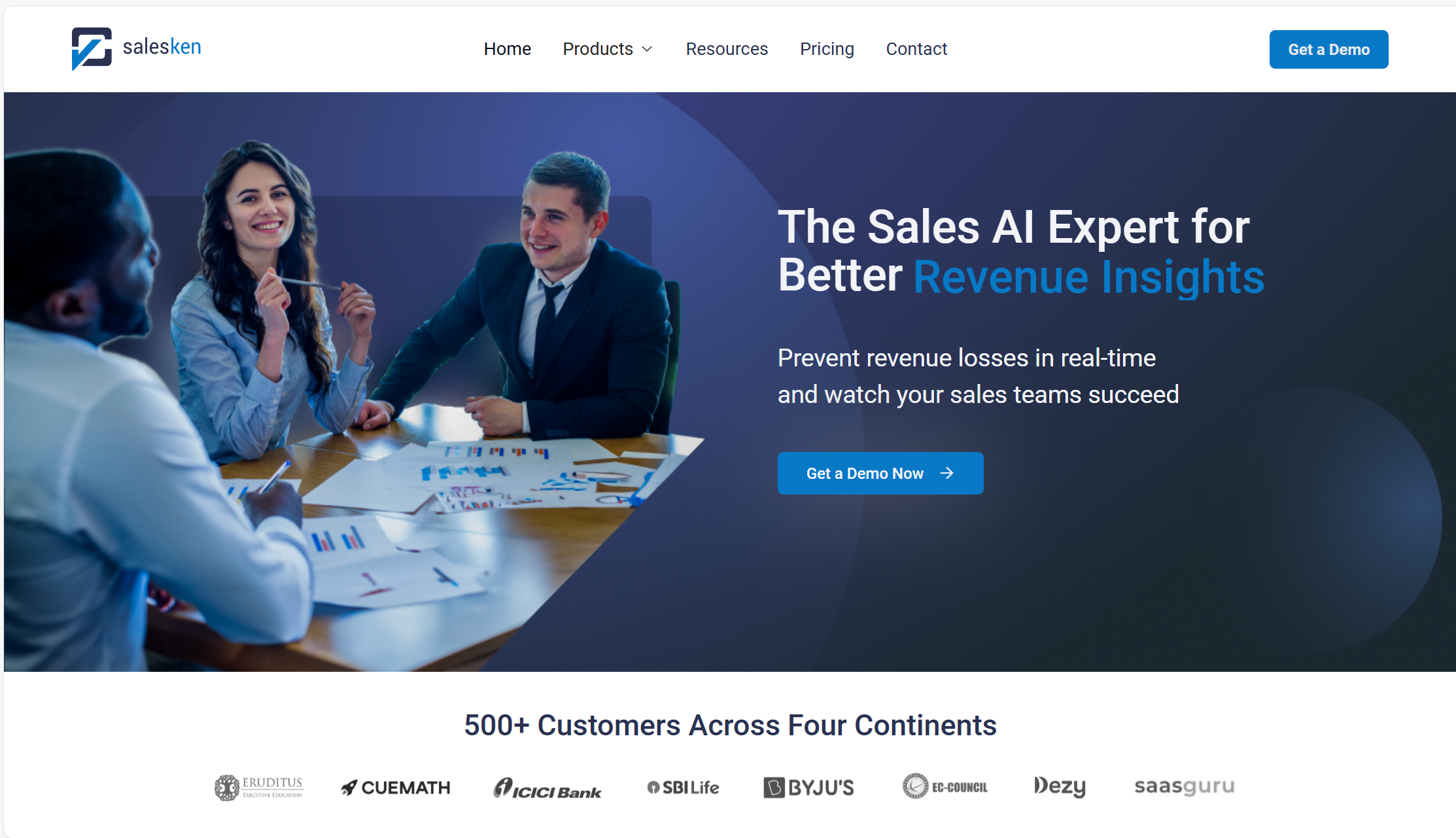
Salesken has a similar goal to Modjo: to help its users convert conversations into conversions. Billed as a conversational intelligence platform, Salesken intends to improve sales team performance and reduce acquisition costs.
One of the great things about Salesken is that it doesn’t just gather intelligence from your recorded calls. You can also loop in lots of other tools, platforms, and touchpoints to create a bigger picture of your sales team overall.
There’s also a fantastic dashboard for sales managers, giving them an inside look into which sales rep is dealing with objections most effectively. You can analyze sales calls in real-time, making it super powerful for those with busy schedules.
As with Gong and Modjo, Salesken’s pricing is hidden behind a sales call. This makes it difficult to see exactly what’s available and what your value for money is. This might have been the reason you were looking for Modjo alternatives in the first place. If that’s the case, tl;dv might be your best bet.
Salesken Pros
- Powerful sales coaching. Like sales coaching on steroids, it listens, assesses, critiques and gives suggestions to sales reps in real-time
- Great integrations. Integrates with CRM and other tools. Custom integrations can be built on request.
- Great for sales. Sales teams can rest easy with Salesken as it’s built with them in mind.
- Revenue intelligence. It can help you analyze your sales pipeline and deal execution strategy.
Salesken Cons
- Shareability. Can’t share calls outside the platform, so no good for sending clips to prospects for additional buy-in
- Overly sales oriented. Like Gong and Modjo, it’s geared up for sales and sales only, making it fairly useless for other departments.
- Intrusive. It could be viewed as intrusive and distracting with its AI insights and intelligence.
- Pricing transparency. It’s impossible to find information about pricing without calling them directly.
- Slow onboarding. It requires some setup and onboarding which can take time.
Pricing
Like Modjo and Gong, Salesken requires you to reach out to their sales team to get a quote. This type of pricing tends to cater to enterprise-level businesses with bigger budgets and larger teams. As such, we can estimate that the price range will be in the same ballpark as Gong and Modjo’s.
Also like those two, Salesken does not have a free plan.
Modjo vs Salesken
Modjo’s main focus is to free up your sales reps’ time so they can focus more on selling. Salesken, on the other hand, aims to prevent revenue loss in real-time. It gives actionable revenue insights that give an accurate forecasting of your pipeline while helping you course correct on vulnerable deals.
Salesken has about 5x more reviews on G2 than Modjo and those reviewers rate it more highly too. It gets 4.9/5, which is as close to perfect as you can get.
4. Avoma
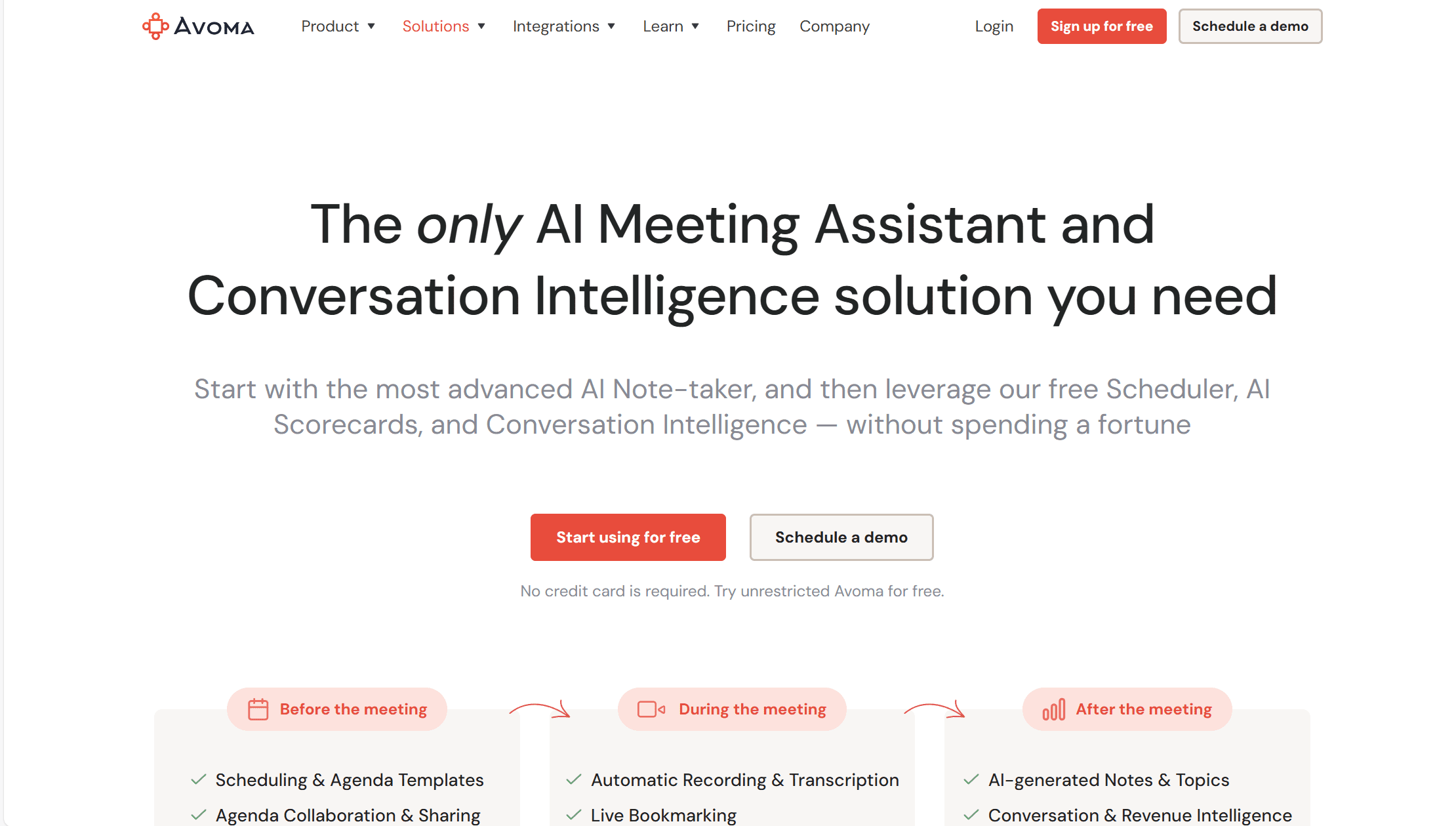
Avoma combines tl;dv and Gong and meets you somewhere in the middle. It’s pricier than tl;dv but generally cheaper than Gong. It has revenue intelligence like Gong, but it doesn’t require you to jump through hoops to sign up. Basically, if you loved tl;dv’s offerings (and free plan to try it out) but you wanted the revenue intelligence features of the other Modjo alternatives, Avoma might be for you.
It’s a sales-focused AI meeting assistant that helps you manage the entire customer lifecycle. You can prep for meetings more easily, take notes automatically, and sit back and relax as Avoma’s AI plucks all the insights out for you afterwards.
Another Avoma advantage is that it’s available for plenty of video conferencing platforms. It works with the three main ones: MS Teams, Zoom, and Google Meet. However, Avoma is also compatible with UberConference, BlueJeans, GoToMeeting, and more.
There is a drawback or two though. Besides the video conferencing platforms, Avoma lacks any decent integrations. It doesn’t even integrate with Zapier so you can’t use a third party to connect your work tools. This is potentially a fatal flaw for sales and revenue teams that need to pull data from all sorts of different places. Avoma’s lack of integrations means that you’ll have to manually transfer data between your tools – something we’re using AI to avoid!
The other drawback is that while it offers translations in 30+ languages, it doesn’t have a localized platform in anything other than English. This makes it relatively useless for non-English teams.
Avoma Pros
- Compatibility. It can be used across Google Meet, Zoom, Microsoft Teams, BlueJeans, UberConference, GoToMeeting, and more…
- Sales coaching. It offers sales coaching derived from personalized insights.
- Revenue intelligence. Plan your sales pipeline better by forecasting deals with Avoma’s AI.
- Collaboration. A collaborative tool that allows multiple people to edit notes in real-time.
- Easy to search. Searchable database across all meetings.
- Free plan. Standard free plan.
Avoma Cons
- Integrations. There’s no Zapier integration, no email integration, and CRM integrations will set you back $49/month.
- Language support. There are no localized platforms for non-English speaking users.
- Customer support. There’s no customer support on the free plan, and only limited support until the Business and Enterprise plans.
Pricing
Avoma’s Starter Plan begins at $19 per user per month and offers just 2,400 minutes of transcription per month. For comparison, tl;dv offers this for free.
The Plus Plan rockets up to $49 per month and unlocks CRM integrations (which tl;dv offers more of for $19 per month) and unlimited transcriptions (which tl;dv provides for free).
Avoma’s Business Plan will set you back $79 per month and unlocks AI scorecards as well as advanced conversation and revenue intelligence.
Avoma also has an Enterprise Plan, priced at $129 per month.
Free Plan Features
- Recording & Transcription (300 mins per month)
- Limited AI-generated Notes
- Collaborative Note-taking
- Agenda Preparation
- Unlimited 1:1 Scheduler
Avoma offers a free 14-day trial for any of its plans so you’re free to test out its advanced features over any 2-week period.
Modjo vs Avoma
Avoma’s free trial of any of its plans automatically makes it a worthy Modjo alternative. If you want to actually try what you’re using before you buy then Avoma is the best revenue intelligence platform for that.
However, it’s worth noting that Avoma was a video recording platform first and foremost. The revenue intelligence features have been added afterwards and don’t have the same depth and quality as the features that Gong or Salesken have for example.
Despite this, Avoma is worth trying out if you’re looking for a revenue intelligence platform that you can try before you buy.
If you want a deep dive into the differences between the top Modjo competitor on this list (tl;dv) and Avoma, see our comprehensive guide: tl;dv vs. Avoma.
The Verdict: What’s the Best Modjo Alternative?
The best Modjo alternative really depends on your business needs. If you require first class sales coaching and a top meeting transcriber, tl;dv is the only Modjo competitor you need to consider.
If, however, revenue intelligence is crucial to your business needs, there are a few more options. Gong is the most reputable platform, and arguably the most complex too. This can be a drawback as you’ll need to coach your team how to use the platform, but it can also help you reap big rewards with more in-depth features than the other Modjo alternatives.
Salesken comes close as it’s a revenue intelligence platform designed to save revenue on the go. Avoma, while it does have revenue intelligence capabilities, can’t match the quality of Gong, Salesken, and even Modjo when it comes to deal forecasting and pipeline management. However, Avoma has a free trial which is more that can be said for the others.
Hopefully, we’ve given you something to think about and a few Modjo alternatives to consider. If you’re clear about your business objectives, there should be a clear winner for you to check out more thoroughly.
Happy forecasting!

